In today’s rapidly evolving digital landscape, staying up to date with the latest visual search trends and strategies for SEO is crucial. Visual search trends and strategies for SEO encompass the cutting-edge techniques and approaches used to optimize websites and content for search engines in the context of visual search. This article from Twilinstok, explores the future of SEO in the dynamic realm of visual search trends and provides insights into effective strategies for leveraging this powerful tool to enhance online visibility and drive organic traffic.
The Rise of Visual Search
One of the emerging trends that SEO professionals need to pay attention to is visual search. Visual search refers to the ability of search engines to understand and interpret images rather than relying solely on text-based queries. Visual search has witnessed a significant rise in popularity and adoption, transforming the way users interact with search engines and discover visual content online. Several factors contribute to the growing prominence of visual search in the digital landscape.
- Increasing User Preference for Visual Content: Users are increasingly drawn to visual content due to its engaging and intuitive nature. Visuals have the power to convey information quickly and effectively, making them appealing to users seeking instant answers or inspiration. For instance, users searching for home decor ideas may find it more convenient to use visual search tools to explore images of different styles and designs rather than relying solely on text-based search results. This shift in user preference has fueled the demand for visual search functionality across various platforms and websites.
- Advancements in Image Recognition Technology: The advancements in image recognition technology have played a crucial role in the rise of visual search. Machine learning algorithms and deep neural networks have improved the accuracy and efficiency of visual search tools in understanding and interpreting images. For example, sophisticated visual search algorithms can now identify objects, recognize patterns, and extract relevant information from images to deliver more accurate search results. This has opened up new possibilities for users to discover visually similar products, landmarks, artwork, and more.
- Integration of Visual Search in E-commerce: Visual search has gained particular traction in the e-commerce industry. Many online retailers have recognized the potential of visual search to enhance the shopping experience and drive conversions. For instance, platforms like Amazonand eBay have integrated visual search functionality into their mobile apps, allowing users to take photos or upload images to find similar products. This enables users to quickly find and purchase items they come across in real life or online images, streamlining the path to purchase.
- Mobile Device Adoption and Advancements: The widespread adoption of smartphones with high-quality cameras has contributed to the rise of visual search. Mobile devices have become the primary tool for capturing and sharing images, making visual search accessible to a broader audience. Additionally, advancements in mobile technology, such as faster processors and improved connectivity, have enabled real-time visual search capabilities. Users can now instantly capture and search for information about objects or scenes they encounter in their day-to-day lives, further driving the popularity of visual search.
As visual search continues to gain momentum, businesses across various industries can leverage its potential to enhance user experiences, increase engagement, and drive conversions. By optimizing their visual content for search engines and incorporating visual search functionality into their platforms, businesses can tap into the growing demand for visual search and stay ahead in this evolving digital landscape.
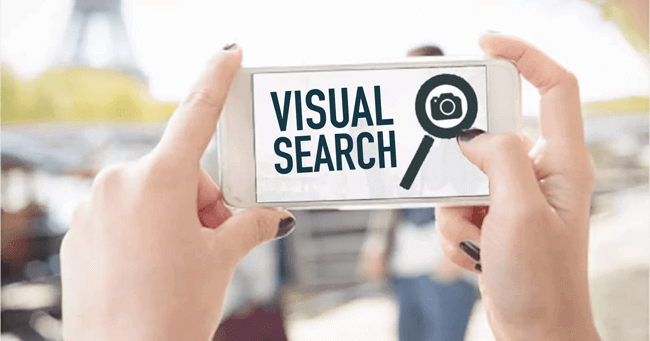
Benefits of Visual Search for SEO
Visual search offers several benefits for SEO practitioners:
- Firstly, it enhances the overall user experience by providing a more intuitive and interactive way to search for information.
- Secondly, visual search increases user engagement, as visually appealing content tends to capture attention and generate higher click-through rates.
- Lastly, visual search has been shown to improve conversions, as it allows users to quickly find and purchase products they visually desire.
Visual Search Tools and Platforms
Several visual search tools and platforms have emerged in recent years, offering businesses opportunities to optimize their visual content and improve their presence in visual search results.
Google Lens
Google Lens is a powerful visual search tool developed by Google. It allows users to take photos or upload images to initiate visual searches. For example, users can take a picture of a landmark or a product and Google Lens will provide information about it, such as historical facts or where to buy the product online. Businesses can benefit from Google Lens by ensuring their products and visual content are optimized for this tool. This includes using high-quality images, implementing proper alt tags and descriptions, and leveraging structured data markup to provide detailed information about the images.
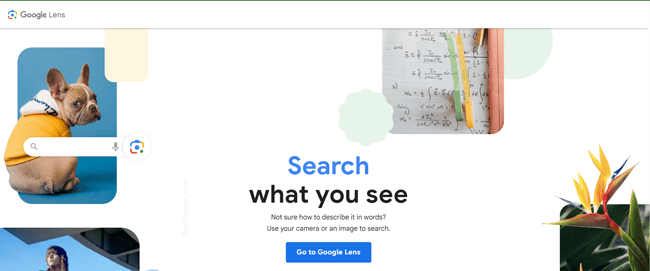
Pinterest Lens
Pinterest Lens is a visual search tool integrated into the Pinterest platform. It enables users to discover visually similar items and related content by taking photos or selecting images from their camera roll. For instance, users can take a picture of an outfit they like, and Pinterest Lens will suggest similar fashion items and provide styling ideas. Businesses can optimize their visual content for Pinterest Lens by creating visually appealing pins and utilizing relevant keywords and hashtags. Additionally, businesses can leverage Pinterest’s rich pin features, such as product pins, to provide detailed information about their products and increase visibility in visual search results.
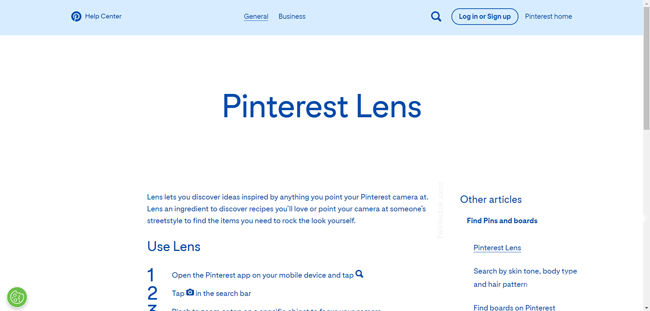
Bing Visual Search
Bing Visual Search is Microsoft’s visual search tool that allows users to search the web using images. Users can upload images or take photos to find visually similar images, products, and related information. For example, users can upload a picture of a piece of furniture, and Bing Visual Search will provide similar items for purchase and related articles on interior design. To optimize for Bing Visual Search, businesses can ensure their images are high-quality, relevant, and properly optimized with alt tags and descriptions. Additionally, implementing schema markup using Bing’s schema guidelines can enhance the visibility of images in Bing’s visual search results.
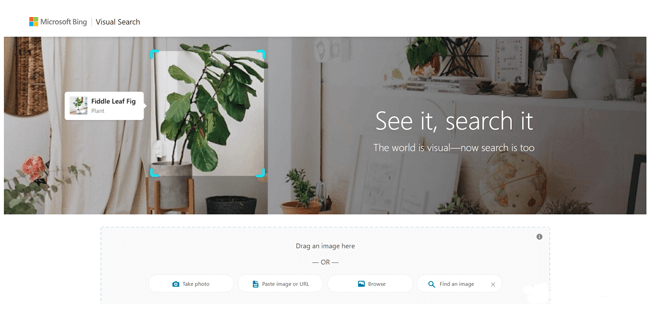
It’s important for businesses to explore and leverage these visual search tools and platforms to maximize their visibility and reach in visual search results. Each tool may have its own specific requirements and best practices, so it’s recommended to refer to their official documentation and guidelines for further details on optimization strategies.
The Golden Strategies for Optimizing Visual Search
To maximize the benefits of visual search and improve visibility in search engine results, businesses can implement various strategies specifically designed for optimizing visual content. Below are key strategies to consider:
Using High-Quality and Relevant Images
Using high-quality and visually appealing images is crucial for optimizing a visual search. Images should be clear, well-lit, and properly optimized for different devices and screen sizes. For example, an e-commerce website selling clothing can optimize its product images by capturing multiple high-resolution images from different angles, showcasing product details, and ensuring consistent image quality across the website. This enhances the user experience and increases the chances of appearing in visual search results.
Using Descriptive Metadata
Providing descriptive metadata for images is essential for search engines to understand the content and context of the visuals. This includes optimizing alt tags, captions, and descriptions with relevant keywords and phrases. For instance, an online recipe website can optimize the alt tag of an image featuring a dish by including specific ingredients and the dish name. This helps search engines accurately identify and categorize the image, improving its visibility in visual search results.
Using Structured Data Markup
Implementing structured data markup, such as schema.org markup, provides search engines with additional information about the content and context of images. This structured data helps search engines understand the relationships between images, products, and other relevant information.
💡 For example, an e-commerce website can utilize schema markup to provide details about product attributes, prices, and availability, enabling search engines to present more comprehensive information in visual search results.
Implementing structured data markup, such as schema markup, is crucial for optimizing images for visual search. Schema markup helps search engines understand the content and context of images, leading to the display of rich results in visual search. By providing detailed information about the images, structured data markup enhances their visibility and increases the likelihood of appearing in relevant visual search queries.
Using Mobile Optimization
Given the prominence of mobile devices in visual search, optimizing visual content for mobile is crucial. Businesses should ensure their images are responsive and load quickly on mobile devices. This includes optimizing image file sizes, leveraging modern image formats like WebP or JPEG XR, and utilizing responsive design techniques.
By providing a seamless and visually engaging experience on mobile devices, businesses can capture the attention of users engaging in visual search on their smartphones or tablets.
Using Visual Sitemaps
Creating a visual sitemap can enhance the discoverability of visual content by search engines. A visual sitemap is a specialized XML file that contains information about the images on a website, including their URLs, titles, and other relevant details. This helps search engines index and understand the visual content more effectively. Websites can generate visual sitemaps using tools like Screaming Frog or through custom development. By submitting the visual sitemap to search engines through Google Search Console or Bing Webmaster Tools, businesses can improve the indexing and visibility of their visual content in search results.
“Voice Search” and “Visual Search” Integration
The integration of voice search and visual search is a growing trend in the SEO landscape. Voice assistants, such as Siri and Google Assistant, are increasingly incorporating visual search capabilities. This integration allows users to perform hands-free visual searches, further enhancing the user experience and providing new opportunities for businesses to optimize their visual content.
The integration of voice search and visual search technologies can create a powerful and seamless user experience, allowing users to interact with search engines using both voice commands and visual inputs. This combination of voice and visual search offers new opportunities for businesses to optimize their content and engage with users in innovative ways.
Here are some important points regarding the integration of these two emerging phenomena in SEO:
Enhanced Visual Search with Voice Commands
Voice commands can enhance the usability of visual search tools by allowing users to initiate searches through voice input. For example, a user can use voice commands like “Find similar products” or “Show me more options” while using a visual search tool to refine their search results. This integration provides users with a more intuitive and hands-free search experience, especially on mobile devices or smart home devices with voice assistants like Google Assistant or Amazon Alexa.
Voice Guidance for Visual Search
Voice guidance can be integrated into visual search experiences to assist users in navigating and interacting with visual content. For instance, a visual search tool can provide audio instructions or descriptions to guide users through a series of images or help them understand the content within an image. This augmented experience can be valuable for users with visual impairments or those who prefer auditory cues. Tools like Google Lens or Microsoft Seeing AI leverage voice guidance to provide detailed information about landmarks, objects, or text in images.
Contextual Integration of Voice and Visual Search
The integration of voice and visual search enables users to switch seamlessly between the two modes based on their needs and preferences. For example, a user can start a search using voice commands and then switch to a visual search to explore visually similar products or objects. This contextual integration allows users to leverage the strengths of both voice and visual search, creating a more comprehensive and personalized search experience. Platforms like Pinterest have integrated voice search capabilities alongside their visual search tools, enabling users to switch between voice and visual inputs seamlessly.
Optimization for Voice-Activated Devices
With the rise of smart home devices and voice-activated assistants, businesses should optimize their visual content to be voice-search-friendly. This includes using descriptive alt tags, captions, and structured data markup to provide detailed information about images. For example, an e-commerce website can optimize its product images by including relevant attributes like color, size, and brand in the alt tags. By optimizing visual content for voice search, businesses can increase their chances of appearing in voice search results and provide users with accurate and relevant information.
This includes implementing best practices for visual search optimization, as well as optimizing content for voice search by using natural language and conversational keywords. Keeping up with advancements in voice recognition technology, voice assistants, and visual search tools is crucial to staying ahead and providing users with a seamless and intuitive search experience.
User Experience and Visual Search
A seamless user experience is crucial for effective visual search optimization. Businesses should consider user interface design principles when implementing visual search on their websites. Clear and intuitive navigation, prominent search features, and visually appealing interfaces play a significant role in engaging users and encouraging them to explore visual search options.

Tracking and Analyzing Visual Search Performance
As with any SEO strategy, tracking and analyzing performance metrics are essential for optimizing visual search efforts. Monitoring visual search metrics, such as click-through rates, conversion rates, and engagement metrics, provides insights into the effectiveness of visual search optimization strategies. Various tools, such as Google Analytics and visual search analytics platforms, can assist in tracking and analyzing visual search performance.
Challenges and Limitations of Visual Search + the Best Solutions
While visual search offers exciting possibilities, it also presents certain challenges and limitations that businesses should be aware of when incorporating it into their SEO strategies.
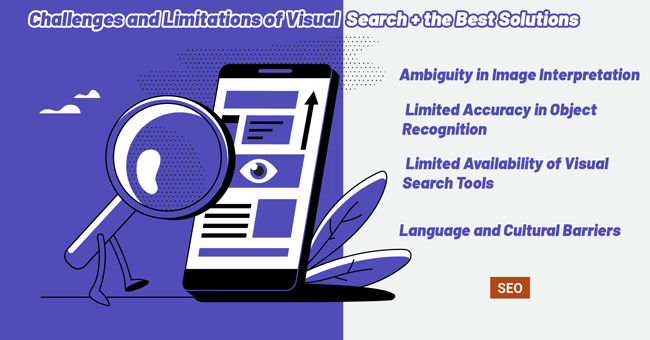
Ambiguity in Image Interpretation
One of the challenges of visual search is the ambiguity in interpreting images. Visual search algorithms may struggle to accurately understand the context, objects, or specific details in an image. For example, if a user searches for “blue dress,” the visual search algorithm may return results that include various shades of blue or different dress styles.
Limited Accuracy in Object Recognition
Visual search algorithms may encounter difficulties in accurately recognizing objects within images. In some cases, objects may be partially obscured, poorly lit, or presented from unusual angles, making it challenging for visual search tools to identify them correctly. For instance, if a user takes a photo of a complex scene with multiple objects, the visual search tool might struggle to recognize and categorize each individual object accurately.
Limited Availability of Visual Search Tools
While visual search is gaining popularity, it is still not as widely available or integrated across all platforms and search engines compared to traditional text-based search. For example, some e-commerce websites may not have visual search functionality built into their platforms, limiting the ability for users to search using images.
Language and Cultural Barriers
Visual search tools may face challenges in understanding images that are specific to certain languages or cultures. For instance, visual search algorithms may struggle to accurately interpret images that contain language-specific text, symbols, or cultural references. This limitation can impact the accuracy and relevance of search results for users in different regions or with different linguistic backgrounds.
It’s crucial for businesses to consider these challenges and limitations when implementing visual search strategies. By understanding these limitations and optimizing visual content accordingly, businesses can enhance the accuracy, relevance, and user experience of their visual search efforts. Additionally, staying informed about advancements in visual search technology and keeping an eye on emerging tools and platforms can help businesses stay ahead of the curve and make the most out of visual search opportunities.
Future Trends in Visual Search
The future of visual search looks promising, with emerging trends on the horizon. Augmented reality (AR) and visual search integration hold considerable potential for enhancing the user experience. AR technology can overlay virtual information onto the physical world, enabling users to interact with visual search results in real time. Additionally, advancements in object recognition algorithms will further improve the accuracy and relevance of visual search results.
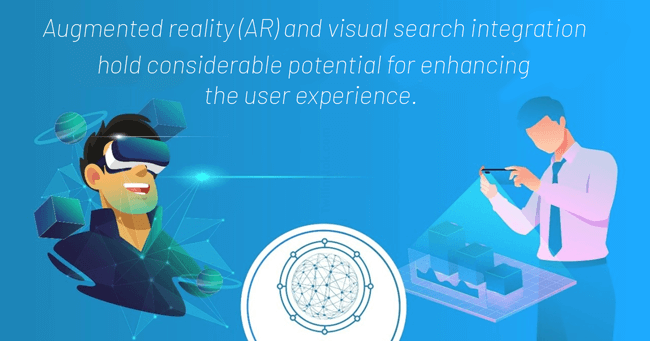
Suggested Articles to Read More
- What Is Citations In SEO?
- Sustainable Link Building Strategies
- Advanced Long-Tail Keyword Targeting Strategies
- Google Discover Traffic Secrets & Hacks
Conclusion
In conclusion, visual search trends and strategies for SEO play a pivotal role in shaping the future of online visibility and search engine optimization.
The ever-evolving landscape of visual search offers exciting opportunities to enhance user experience, increase engagement, and drive organic traffic. To succeed in this dynamic environment, it is essential for SEO professionals to stay informed about the latest visual search trends and continuously adapt their strategies to leverage the full potential of this game-changing technology. By integrating visual search into their SEO efforts, businesses can unlock new avenues for growth and ensure their online presence remains strong in the era of visual search trends and strategies for SEO.
For more information about Search Engine Optimization, we suggest that you click on Free SEO Tutorial [+]. Also, if you have any questions about SEO, you can ask them in our SEO support center [+] in the form of a topic and wait for the answer of our experts.
Please share your comments and give us 5 stars. We can use your valuable suggestions and criticisms.
FAQs
What is visual search?
Visual search refers to the ability of search engines to interpret and understand images for retrieving relevant information and results.
How does visual search impact user behavior?
Visual search provides a more intuitive and interactive way for users to search for information, leading to increased engagement and improved user experience.
How can I optimize images for visual search?
To optimize images for visual search, focus on using high-quality visuals, descriptive alt tags, and relevant file names.
What is structured data markup for visual search?
Structured data markup, such as schema markup, provides additional information to search engines about the content and context of images, increasing their visibility in visual search results.
What are some future trends in visual search?
Augmented reality integration and advancements in object recognition algorithms are expected to shape the future of visual search, enhancing the user experience and improving result accuracy.

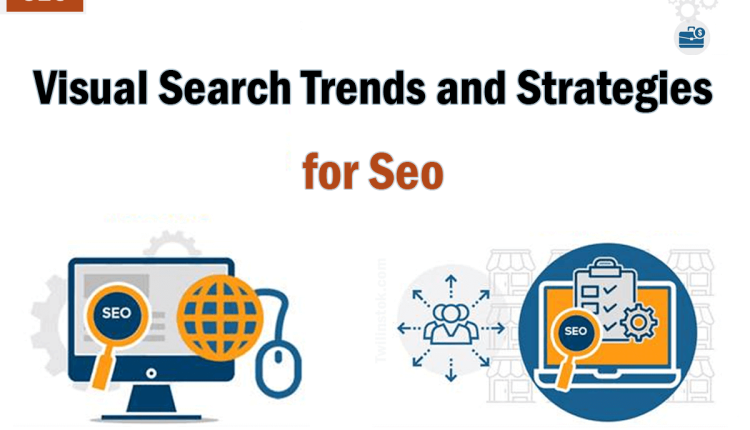
So helpful. Bravo 👏